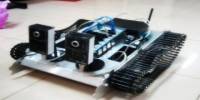The human brain adapts when it learns anything new. When artificial intelligence (AI) learns anything new, though, it has a tendency to forget what it already knows.
As companies collect more data to improve how AI recognizes images, learns languages, and performs other complex tasks, a paper published this week in Science demonstrates how computer chips could dynamically rewire themselves to take in new data, similar to how the brain does, allowing AI to learn over time.
“The brains of living beings can continuously learn throughout their lifespan. We have now created an artificial platform for machines to learn throughout their lifespan,” said Shriram Ramanathan, a professor in Purdue University’s School of Materials Engineering who specializes in discovering how materials could mimic the brain to improve computing.
The circuits on a computer chip do not change, unlike the brain, which constantly establishes new connections between neurons to facilitate learning. A circuit that has been used by a machine for years is identical to the circuit that was created for the machine in the factory.
This is a difficulty when it comes to making AI more portable, such as for autonomous vehicles or space robots that must make decisions on their own in remote locations. These machines would be more efficient if AI could be incorporated directly into hardware rather than running on software, as it currently does.
Ramanathan and his team developed a novel piece of hardware that can be reprogrammed on demand using electrical pulses in this investigation. Ramanathan believes that the device’s versatility will allow it to do all of the activities required to create a brain-inspired computer.
The brains of living beings can continuously learn throughout their lifespan. We have now created an artificial platform for machines to learn throughout their lifespan.
Shriram Ramanathan
“If we want to build a computer or a machine that is inspired by the brain, then correspondingly, we want to have the ability to continuously program, reprogram and change the chip,” Ramanathan said.
Toward building a brain in chip form
The hardware is a small rectangular device built of perovskite nickelate, a material that is extremely sensitive to hydrogen. The device can shuffle a concentration of hydrogen ions in a matter of nanoseconds by applying electrical pulses at varying voltages, creating states that the researchers discovered could be mapped out to corresponding activities in the brain.
When there is more hydrogen towards the device’s center, it can function as a neuron, or a single nerve cell. The gadget acts as a synapse, a connection between neurons, which the brain utilizes to store memories in complicated neural circuits, with less hydrogen at that place.
The Purdue team’s collaborators at Santa Clara University and Portland State University showed that the internal physics of this device creates a dynamic structure for an artificial neural network that can recognize electrocardiogram patterns and digits more efficiently than static networks through simulations of the experimental data.
This neural network employs “reservoir computing,” which describes how different areas of the brain communicate and exchange data.
In this study, researchers from The Pennsylvania State University revealed that as new problems arise, a dynamic network may “pick and choose” which circuits are best suited to solving them.
Ramanathan expects that the semiconductor industry would quickly adopt this technology because the team was able to manufacture the device using regular semiconductor-compatible fabrication procedures and run it at ambient temperature.
“We demonstrated that this device is very robust,” said Michael Park, a Purdue Ph.D. student in materials engineering. “After programming the device over a million cycles, the reconfiguration of all functions is remarkably reproducible.”
The researchers are working on large-scale test chips that will be utilized to build a brain-inspired computer to showcase these notions.
Experiments were carried out at Purdue’s Discovery Park’s FLEX Lab and Birck Nanotechnology Center. The team’s collaborators measured the device’s properties at Argonne National Laboratory, the University of Illinois, Brookhaven National Laboratory, and the University of Georgia.
The National Science Foundation, the US Department of Energy’s Office of Science, and the Air Force’s Office of Scientific Research also contributed to the study.
















